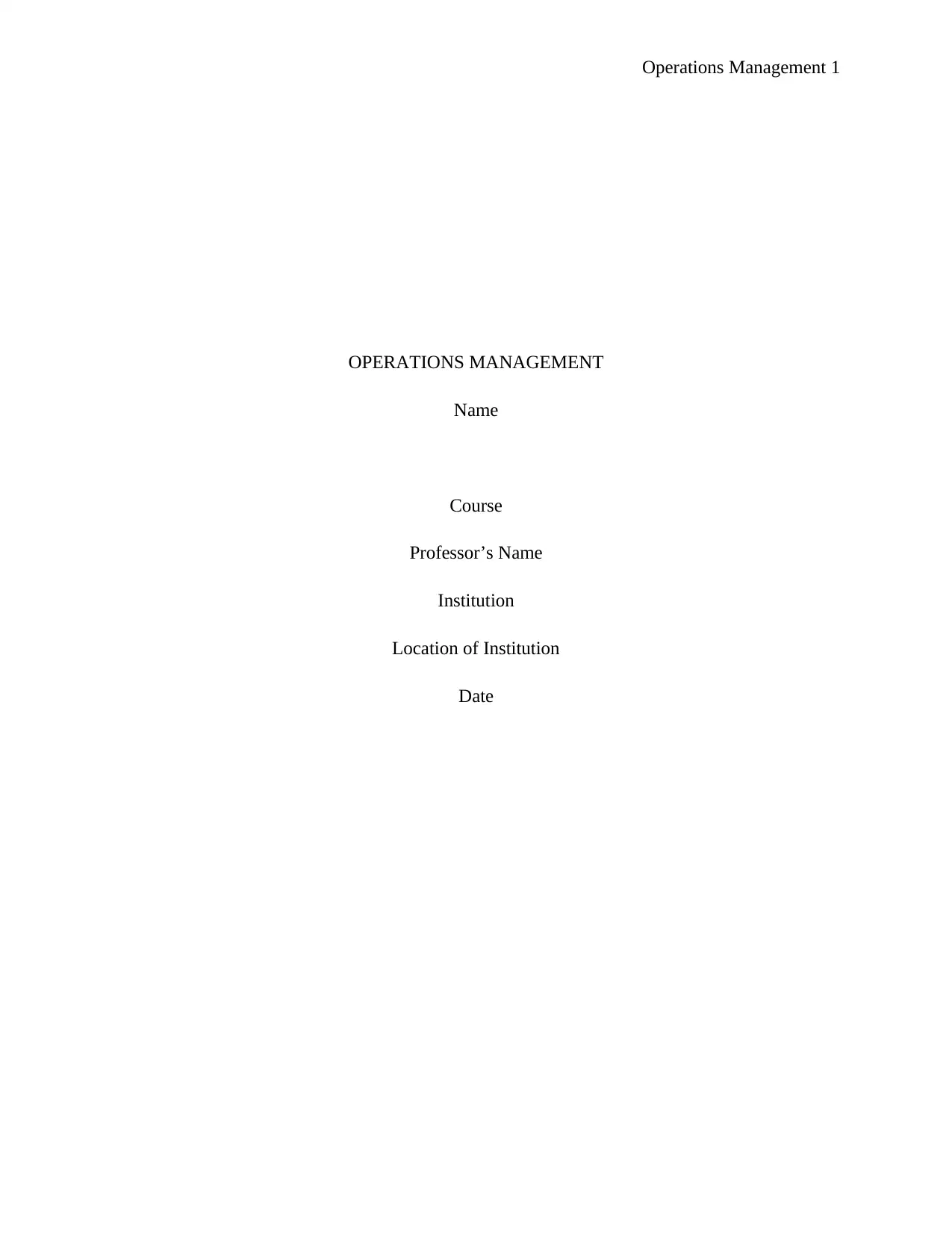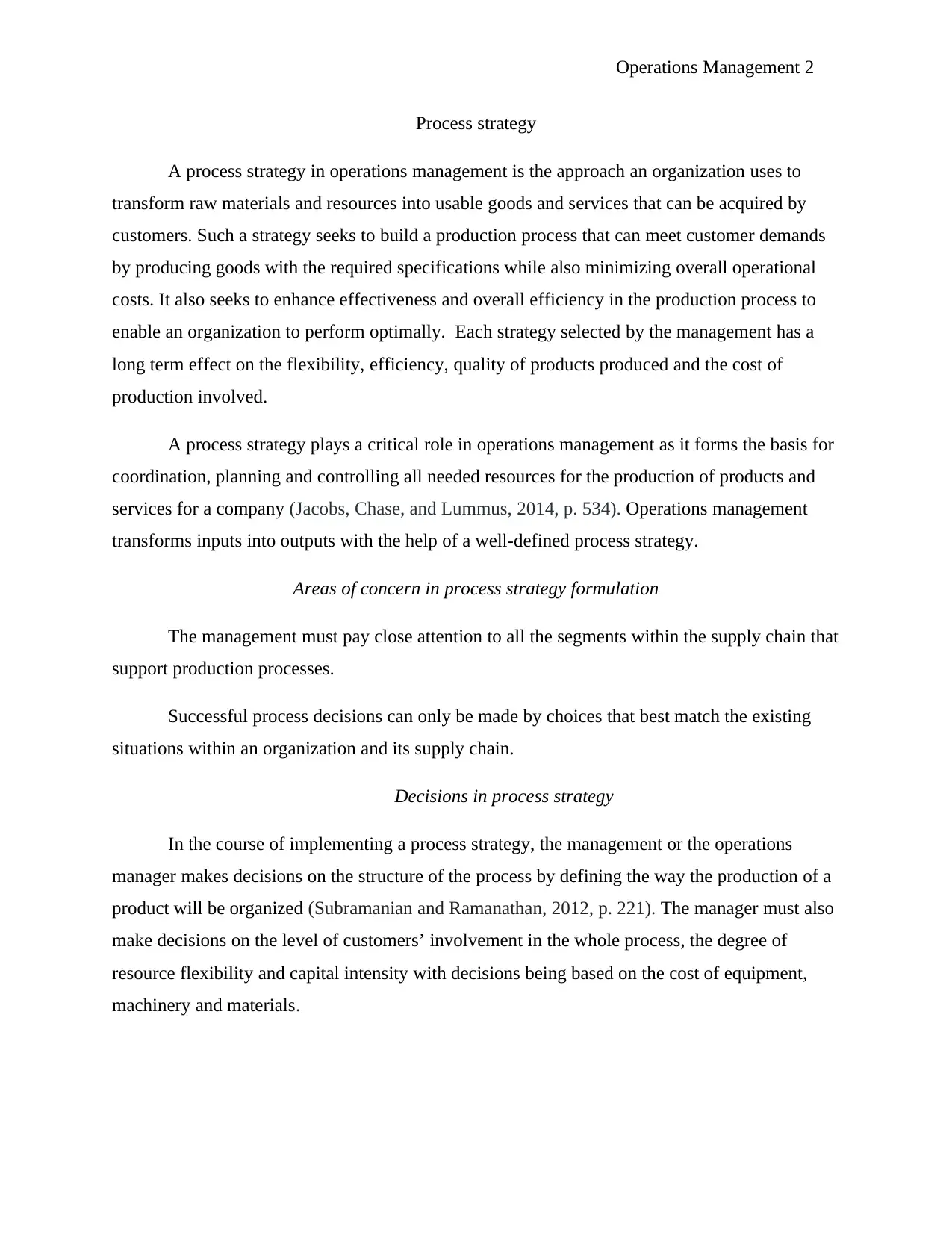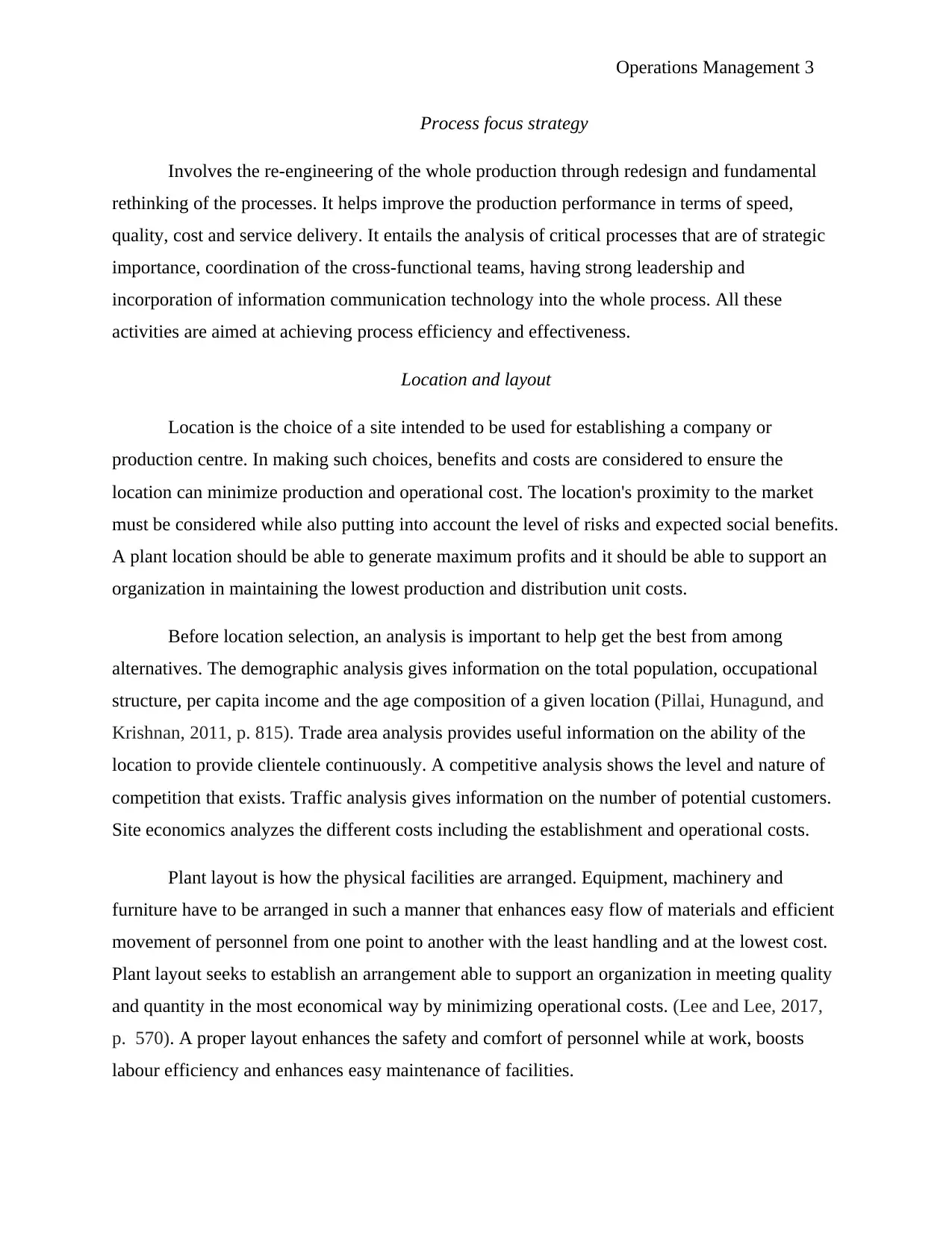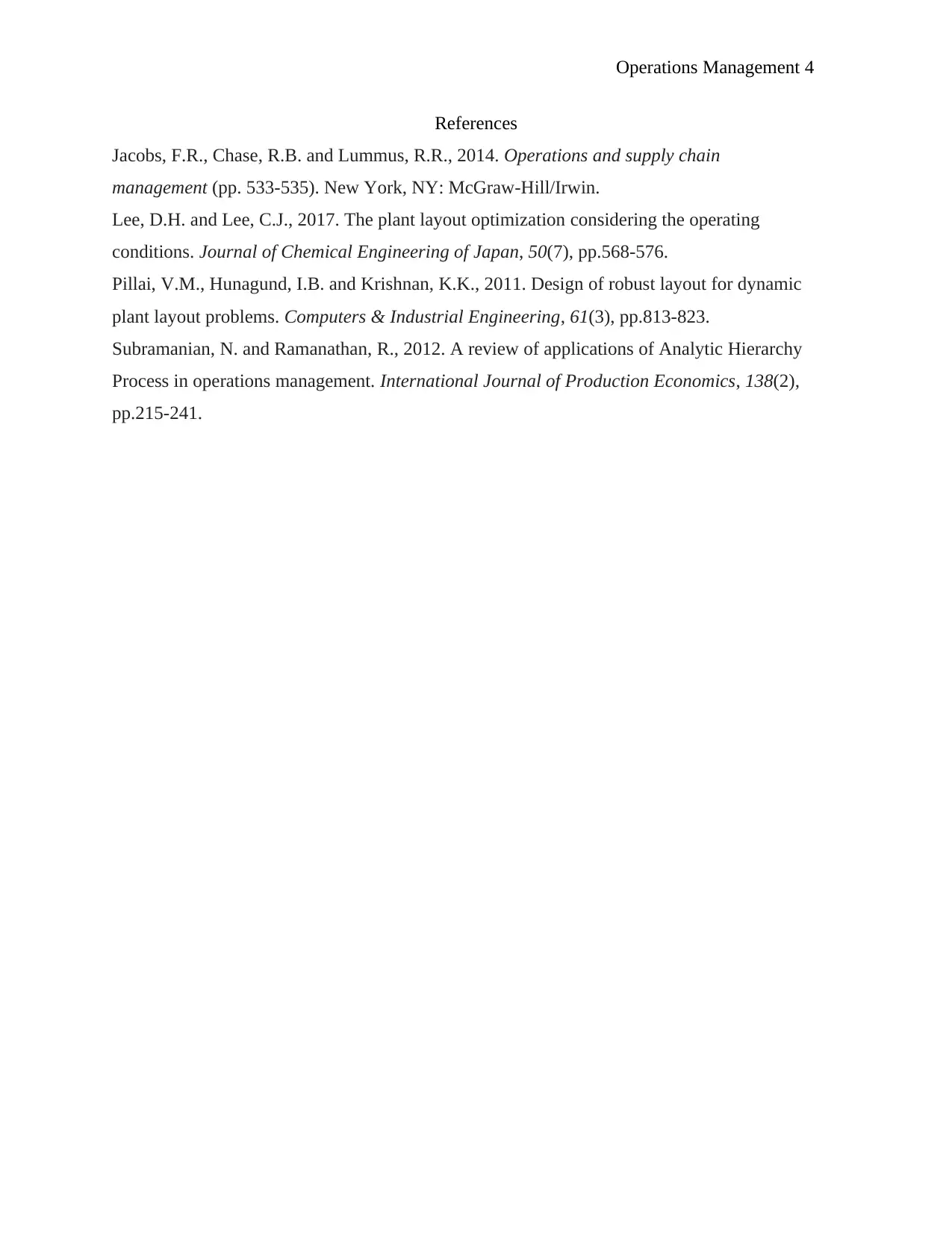Operations Management: Process Strategy, Location, and Layout Analysis
VerifiedAdded on 2022/08/08
|4
|867
|34
Project
AI Summary
This assignment focuses on process strategy, location, and layout within operations management. It begins by defining process strategy and its role in transforming raw materials into usable goods and services, emphasizing its impact on flexibility, efficiency, and cost. The assignment covers key areas of concern in process strategy formulation, including supply chain integration and decision-making on process structure, customer involvement, resource flexibility, and capital intensity. It delves into the process focus strategy, which involves re-engineering production for improved speed, quality, cost, and service delivery. Additionally, the assignment examines location and layout, including site selection criteria, demographic analysis, trade area analysis, competitive analysis, and plant layout optimization for efficient material and personnel flow. The assignment also includes detailed references to support the concepts discussed.
1 out of 4











![[object Object]](/_next/static/media/star-bottom.7253800d.svg)